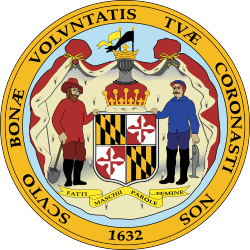| ||||||||||||||||||||
| Turnout | 54.02% | |||||||||||||||||||
|---|---|---|---|---|---|---|---|---|---|---|---|---|---|---|---|---|---|---|---|---|
| ||||||||||||||||||||
O'Malley: 40–50% 50–60% 60–70% 70–80% 80–90% >90% Ehrlich: 40–50% 50–60% 60–70% 70–80% 80–90% >90% Tie: 40–50% 50% | ||||||||||||||||||||
| ||||||||||||||||||||
| Elections in Maryland |
|---|
 |
The 2010 Maryland gubernatorial election was held on November 2, 2010. [2] The date included the election of the governor, lieutenant governor, and all members of the Maryland General Assembly. Incumbent Democratic Governor Martin O'Malley and Lieutenant Governor Anthony Brown won election to a second term in office, defeating Republican former Governor Bob Ehrlich and his running mate Mary Kane.
Contents
- Background
- Democratic primary
- Candidates
- Results
- Republican primary
- Candidates 2
- Results 2
- Minor party candidates
- Constitution Party
- Green Party
- Libertarian Party
- General election
- Predictions
- Polling
- Endorsements
- Results 3
- Ehrlich campaign robocall controversy
- See also
- References
- External links
Ehrlich had previously lost to O'Malley in 2006. O'Malley and Brown became the first gubernatorial ticket in Maryland history to receive more than one million votes. [3] [4]
While Ehrlich won a clear majority of Maryland's counties, he lost in the area between Baltimore and Washington, which accounts for more than 90% of the state's population. This allowed O'Malley to win by a relatively large margin of 14.4%.





